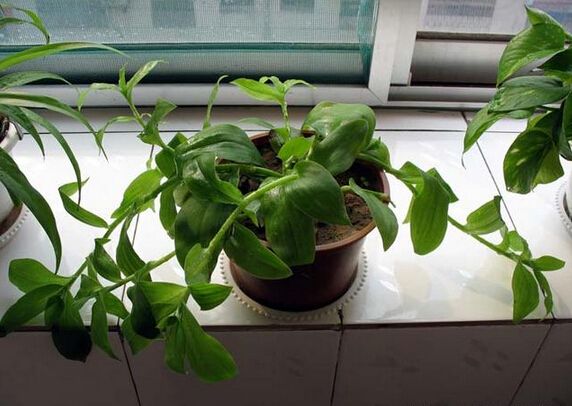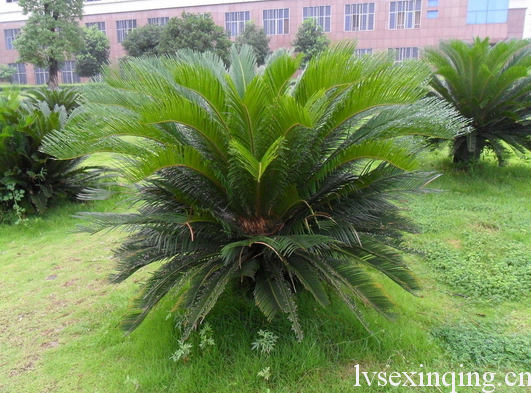Prevention and control of diseases and insect pests of Brazilian wood cultivated in family
Brazilian wood is a foliage plant of the genus Dracaena, native to Guinea and widely distributed in the sub-African tropics. Guangzhou was introduced into China in the 1980s and became popular in Beijing after the 1990s. While more and more Brazilian wood enters the families of ordinary people in China, several diseases and insect pests that seriously harm Brazilian wood have also been brought into our country.

First, the sugarcane moth mainly eats the fleshy cortex of Brazilian wood by its larvae, which appears when it is lightly damaged, and a small amount of insect dung is excreted; when the victim is serious, it eats all the fleshy part under the epidermis and replaces it with insect dung. Press the epidermis with your hands, there is a soft feeling, peel off the epidermis to check, you will find that it is full of insect dung. The adults of the sugarcane moth specially choose the wounds of Brazilian wood to lay eggs, so any wound on the stake will be seriously injured. In particular, the saw at the top of the stake, such as lax wax sealing or white wax sealing, suffers more seriously. In Beijing, the sugarcane moth has the habit of going down to the soil during the overwintering season. At present, sugarcane moth has caused serious losses in flower production, and the loss rate of Brazilian wood can be as high as 50%. In some bases, it can even wipe out Brazilian wood. Although there are only one or two pots of Brazilian wood placed in the family, sugarcane moths also occur.
Second, stem rot is caused by Candida albicans. Most of the symptoms appear on the stem, irregular black spots are formed in the phloem, and there is a gray-white or black mold layer on the phloem. In severe cases, the phloem is completely peeled off and black rot, and the damaged wood is water-stained and slightly browned. The bacteria spread rapidly up and down after invading the xylem, resulting in decay and the formation of a large number of black mold layers at the cut or wound. Symptoms can also occur on the leaves, mostly from the leaf edge or wound first appear disease spot, at the beginning of the brown dot, wet quickly expand into a black-brown irregular long spot, the edge of water stains, serious leaves withered. At present, stem rot has caused great losses in production. It is often accompanied by the sugarcane flat moth, and often occurs frequently in the stalks that have been eaten by insects.
Third, bark beetles have been reported abroad that Brazilian wood has been seriously damaged by a kind of bark beetle. In 1997, a bark beetle harmful to Brazilian wood was found in Guangdong Province, China. It was identified that the damage to the grain wood bark beetle was basically similar to that of the sugarcane moth, the insect body was small, the feces were slightly fine, and usually occurred with the sugarcane moth. Fourth, family prevention and control law, first of all, should pay attention to prevention, the purchase of Brazilian wood must be carefully selected, choose insect-free and disease-free plants. In the process of cultivation, it is necessary to check frequently and detect the insect situation as soon as possible. After the victim is found, the prevention and control should be carried out in time. 1. If diseases and insects are found in the injured department, clean up first. Remove insect feces, find larvae and kill them in time, and remove the discolored and dead parts after being damaged. 2. Summer protection measures summer is the peak period for the occurrence of sugarcane moth, which should be paid more attention to. It can be protected by spraying insecticide, and it is better to use 2000 times 20% chrysanthemum EC or 2 500 times 20% butyl EC. The adult sugarcane moth is nocturnal. Combined with family mosquito fumigation, Brazilian wood can be placed near the mosquito repellent to kill adults that come out at night to lay eggs.
Time: 2019-04-21 Click:
- Prev

What if the leaves of the iron tree turn yellow?
The iron tree, also known as cycad and Phoenix-tailed banana, is an evergreen woody plant with a slow growth rate and a basic life span of more than 200 years. The iron tree is simple in shape, stout in the trunk and as hard as iron, hence its name. Its leaves are as sharp as needles. It is a common large foliage plant.
- Next

Selection of seed fertilizer for corn and matters needing attention
Selection of seed fertilizer for corn and matters needing attention
Related
- Fuxing push coffee new agricultural production and marketing class: lack of small-scale processing plants
- Jujube rice field leisure farm deep ploughing Yilan for five years to create a space for organic food and play
- Nongyu Farm-A trial of organic papaya for brave women with advanced technology
- Four points for attention in the prevention and control of diseases and insect pests of edible fungi
- How to add nutrient solution to Edible Fungi
- Is there any good way to control edible fungus mites?
- Open Inoculation Technology of Edible Fungi
- Is there any clever way to use fertilizer for edible fungus in winter?
- What agents are used to kill the pathogens of edible fungi in the mushroom shed?
- Rapid drying of Edible Fungi

